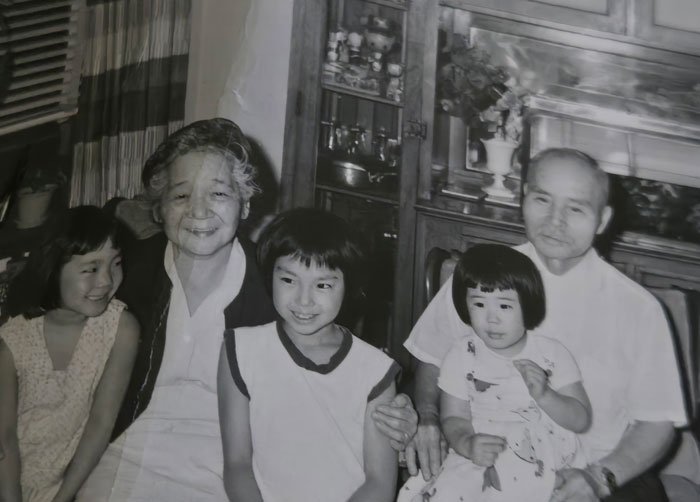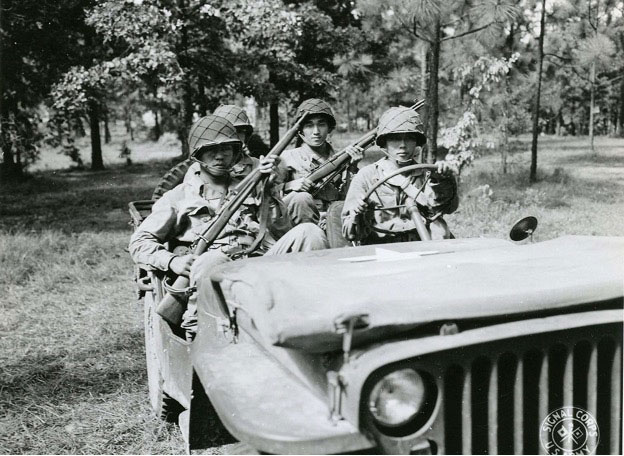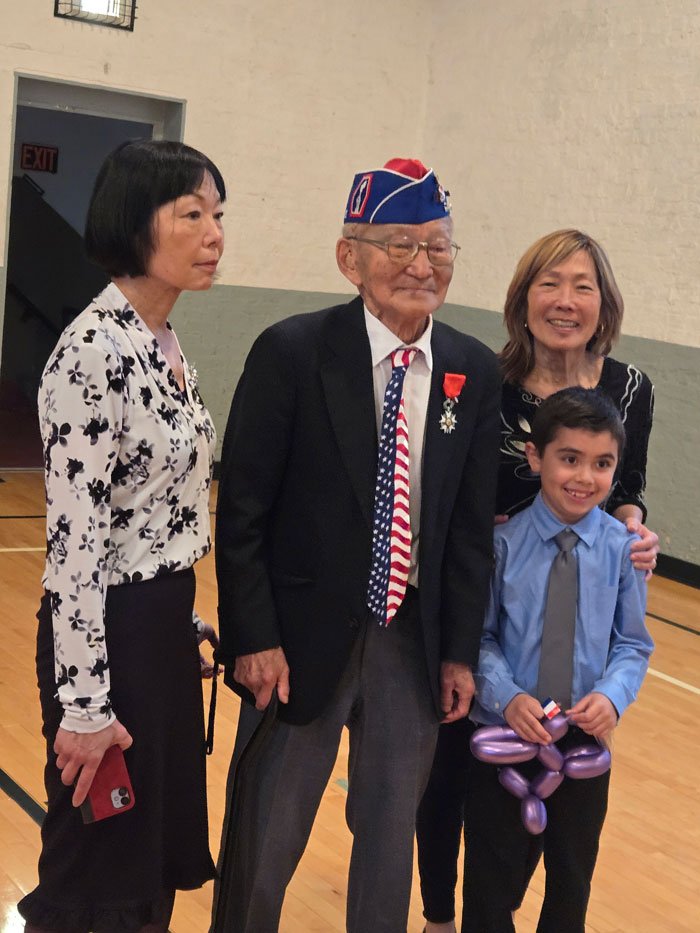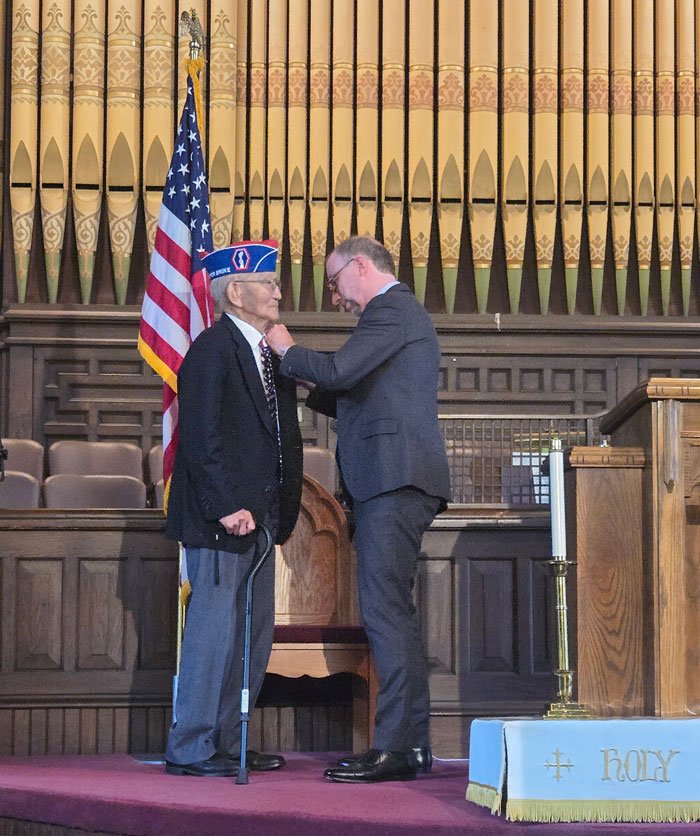A Hero Lived Quietly Across the Street. Little Did I Know He Helped Save the World.
Enoch H. Kanaya was my sun-seeking neighbor who plucked red, ripe tomatoes off the vine in his sunny garden on our tree-lined streets in Chicago. He and his family—his wife, Carolyn, and their four daughters—moved into their modest brick home across the street from our family in the late 1960s.
One of those daughters, Barbara, was a petite, vivacious child with a quick laugh who played bongo drums and loved to sing. She was limber enough to do “the splits” after a few deep stretches, and she easily fit into our existing all-girl friend group.
We thrived on silly conversations, sleepovers, and pranks, and like most children, we did not consider parents three-dimensional beings. We took up the proscenium stage; parents hid behind the curtains.
I was too distracted and self-involved to recognize that Mr. Kanaya—who tended to ripe garden tomatoes on humid summer days or tinkered with electronic equipment as we raced in and out of rattling screen doors—was a hero living quietly across the street.

Enoch Kanaya’s parents with three of their granddaughters. (Photo courtesy of the Kanaya family)
For me, the Kanaya canon began to unfold through an elementary school lecture and a high school history fair project that required a person with wartime experience, and later, as an adult, through conversations with his family.
Enoch H. Kanaya and his two siblings grew up in rural Clackamas, Oregon, before the family relocated to the bustling city of Portland. Like other children their age, they busied themselves with sports and attended school functions. But after the surprise Japanese attack on Pearl Harbor in December of 1941, Japanese American communities got swept up in a discriminatory crossfire.

Enoch Kanaya, center, and his family were sent to an internment camp along with thousands of other Japanese Americans following the bombing of Pearl Harbor. (Photo courtesy of the Kanaya family)
In February 1942, President Franklin D. Roosevelt signed an executive order that led to the incarceration of 120,000 innocent Japanese Americans during World War II and caused many civilians to view neighbors through a suspicious lens.
The Kanaya clan, in tandem with thousands of other Japanese American families, were sent to barbed wire internment camps. With little notice, they were forced to get rid of their possessions and vacate the only homes they had ever known.
The Kanaya family weathered a strange, new world on the outskirts of Hunt, Idaho, called “Minidoka Camp.” Making the best of an unprecedented predicament, the teenaged Enoch worked as a truck mechanic for a paltry monthly sum while completing his high school education part time.
His older brother, who I knew as my friend Barbara’s “Uncle Jimmy,” had enlisted in the US Army before Pearl Harbor. At 19, Enoch was drafted into the 442nd Regimental Combat Team, a segregated Japanese American unit, and sent to the rigorous, 16-week “infantry replacement training” program, where he learned to shoot the US Army’s arsenal. On the massive Aquitania, the 442nd crossed the Atlantic and landed in France. There, they were ordered to safeguard the Alps that separated France and Italy from invading German troops.
In Italy, the 442nd successfully pushed the German troops back. After that victory, the soldiers guarded German prisoners of war before finally returning home, where they received a Presidential Citation.

Members of the 442nd, a segregated unit of Japanese Americans, ride a jeep in France during World War II. (Photo courtesy of the National Archives)
But it wasn’t until 2011 that this unsung group of segregated soldiers received the Congressional Gold Medal. By then, Mr. Kanaya had raised four daughters with his wife, Carolyn, with whom he’d traveled the globe. He’d tallied up 28 years as a technician at the Admiral Corporation in his hometown.
Then, this May, 80 years after he was drafted into the Army, Enoch H. Kanaya—now one of the last remaining survivors of the 442nd—received France’s highest order of merit, the National Order of the Legion of Honour, in a ceremony in a Chicago church.
I was there to see it.
Childhood memories, like calendar pages swept up by a random wind, filled my mind as I entered a 135-year-old church for a ceremony that included more than 50 attendees and a cross-section of generations—family, community members, politicians, dignitaries, veterans who kept in touch over the span of decades. Consul Gen. of Japan Jun Yanagi and Consul Gen. of France Yannick Tagand were among them.
Award-Winning Journalism in Your Inbox
In preparation for the ceremony, I’d learned all I could about the 442nd, including watching a video created by the Pritzker Military Museum in Chicago in which Mr. Kanaya spoke of his part in the fighting. With few 442nd veterans left, there is a scramble to tell their story.

Enoch Kanaya, center, with two of his daughters, Carola Kanaya and Barbara Kanaya, and his great-grandson, Quentin. Enoch Kanaya was recently awarded France’s highest order of merit. (Photo by Lisa Torem)
The motto of the 442nd was “Go for Broke”—put everything on the line to win. Despite the racism they’d faced at home, they’d done just that. From May 1943 to April 1944, the units of the 442nd trained for combat. During that time, many were sent to Europe as replacements for the 100th Infantry Battalion, another Japanese American unit.
Eighty years ago, the 442nd arrived in Italy; that September, they were part of the invasion of Southern France that liberated many cities from the Nazis. They went on to fight with the segregated African American 92nd Infantry Division to drive German forces out of northern Italy.
In February 1945, Mr. Kanaya was deployed to the Alps along the border of France and Italy, where he joined the F “Fox” Company, 2nd battalion. In the video, he recounted being commanded to return to Italy. Their mission would be perilous.
“The Germans had fortified the ‘Gothic Line,’” he recalled of the Nazis’ last line of defense in Italy.
“That’s where they stopped the Allied advance even before the 442nd had left for France,” Mr. Kanaya added. “So, when the 442nd came back to Italy, they [the Germans] were still at the same line.”
He has retold the story to rapt intergenerational audiences many times over, yet his tone remains vibrant.
“The best way to attack the Gothic Line was to sneak through the mountains and attack them from the rear, and they gave us that job,” he explained.
In July 1946, he was one of the last men of the 442nd to leave Europe. Soon after his return to the U.S., he was discharged from the Army.
Inside the Chicago church, my eyes focused on Enoch H. Kanaya. Time has turned my friend’s father’s hair salt and pepper. His gait is not nearly as steady. But he is much the same, too. Soft-spoken, articulate. A man who values family.
I watched as he carefully navigated the stairs to accept his award, his eyes constellation-bright, his smile gracious. He paused for photos before heading to the podium.

Enoch Kanaya receives the National Order of the Legion of Honour from Consul Gen. of France Yannick Tagand in a ceremony in Chicago. (Photo by Lisa Torem)
The consul general of France pinned the gleaming circular disc to Mr. Kanaya’s neatly pressed jacket and embraced him. “Thanks to you, I grew up in a free country. The French people will never forget what we owe you,” he said.
“This medal does not just belong to me,” Mr. Kanaya says. “It belongs to all veterans. I want to thank them also. Tom Brokaw said that the World War II veterans saved the world. They kept all of us free. If it were not for the World War II veterans, we would not be here today.”
His voice was firm, unwaveringly clear, yet rife with emotion. He wore a cap emblazoned with the 442nd’s motto, “Go for Broke.”
My childhood friend Barbara smiled. She confided that she never imagined asking her father for his autograph.
As I watched Mr. Kanaya, I finally took in the whole man—a father, a husband, a soldier, a patriot. He is living history, an educator who has brought textbook battles and triumphs to life for generations of children and adults.
Parents are no longer wainscoting, no longer wallpaper at our giddy pajama parties.
A grown-up Barbara told me that the “H” in her father’s name stands for “Hiroru,” which means “abundant and giving.”
We agree that it is fitting.
Our Journalism Depends on Your Support
The Nisei generation, the first group of Japanese Americans to call North America home, had to live up to extraordinarily high standards. They fought bravely and honorably for a nation that viewed them with suspicion and incarcerated them.
Sometimes heroes exist solely in the mind of the beholder. Mr. Kanaya has been generally dismissive about his herculean accomplishments. The “real” heroes, he says, never came home.
But Enoch H. Kanaya did come home and started a family. He lived across the street from me.
As one of the youngest and last surviving members of the 442nd, he symbolizes the heroism of the World War II generation and the courage and sacrifice of the Nisei volunteers.
In the Greatest Generation’s victory garden, his legacy is evergreen.
Writer’s note: Special thanks to Enoch H. Kanaya, Barbara Kanaya, and family; and to Pascale Thome, Christopher Torem, and Stephanie Sunata.
This War Horse reflection was written by Lisa Torem, edited by Kristin Davis, fact-checked by Jess Rohan, and copy-edited by Mitchell Hansen-Dewar. Abbie Bennett wrote the headlines.





Comments are closed.